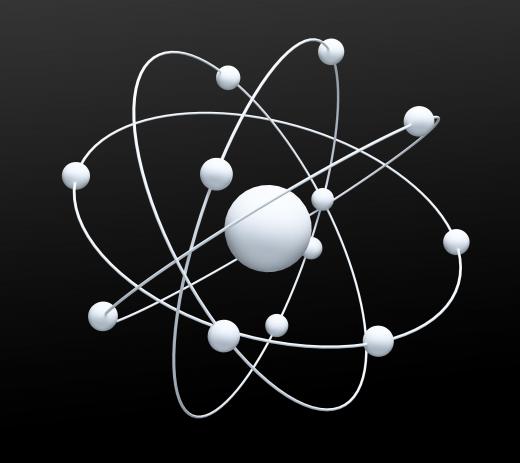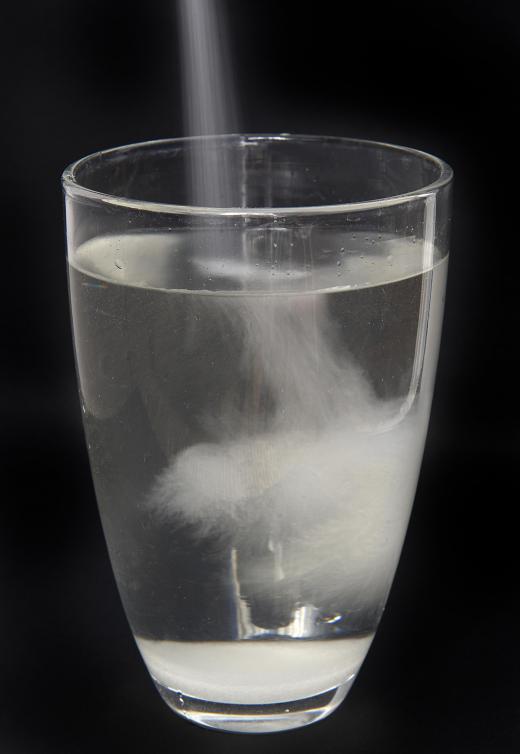What is a Nonelectrolyte?
A nonelectrolyte is a term used in chemistry to denote a substance that does not break up, or dissociate, into ions when placed in solution. Nonelectrolytes usually consists of molecules which are covalently bonded and may or may not dissolve in water. Unlike electrolytes, nonelectrolytes do not conduct electricity when in a solution. Sugar, C12H22O11, is an example of a nonelectrolyte.
Ions are positively or negatively charged atoms. A neutral atom, one that has no charge, has the same number of protons, which are positively charged particles, and electrons, negatively charged particles. When the atoms form a molecule, and are bound together by an ionic bond, one or more of the electrons in one atom moves into the orbit of another atom, thus creating an imbalance in the proton-electron ratio in each atom. When the atoms dissociate in a solution, one of the new atoms will have a positive charge, while the other will have a negative. These are electrolytes.

Conversely, atoms that form covalent bonds to create molecules share electrons between the atoms. Since the atoms are shared rather than transferred, the ratio of protons and electrons remains equal even after the bond is split. Covalent bonds are much stronger than ionic bonds, however, so the molecules tend to stay together in a solution. These are nonelectrolytes.

Sugar and salt are good examples of a nonelectrolyte versus an electrolyte. Sugar is a nonelectrolyte. When placed in water, sugar grains, made up of many molecules of C12H22O11, dissolve. In covalent bonds, individual molecules do not have a strong attraction to other molecules in a substance, but atoms inside individual molecules do have a strong attraction to other atoms in that molecule. Therefore, although the bonds between the molecules break, the molecules themselves remain intact.
On the other hand, when salt, an electrolyte, is placed in water, the sodium (Na) and Chloride (Cl) atoms dissociate. So when the grain of salt dissolves, atoms rather than molecules are left floating in the solution. Because NaCl is ionically bonded, the sodium atom loses an electron, and the chloride atom gains the electron during the initial bonding. Therefore, when the bond is split, chloride is left with one more electron than proton, and sodium with one less. Rather than having sodium and chloride atoms floating in a solution, sodium and chloride ions, Na+ and Cl-, are contained in the solution.
Since electrolytes have charges when in solution, they conduct electricity well. Because nonelectrolytes have no charge, they do not conduct electricity. Also, because of the nature of covalent bonds, nonelectrolytes tend to have low melting and boiling points and are not crystalline structures.
AS FEATURED ON:
AS FEATURED ON:












Discuss this Article
Post your comments